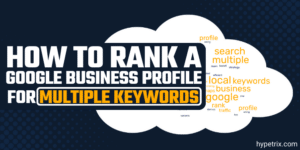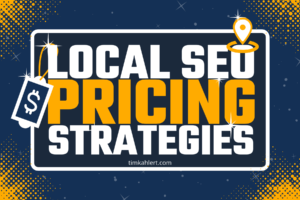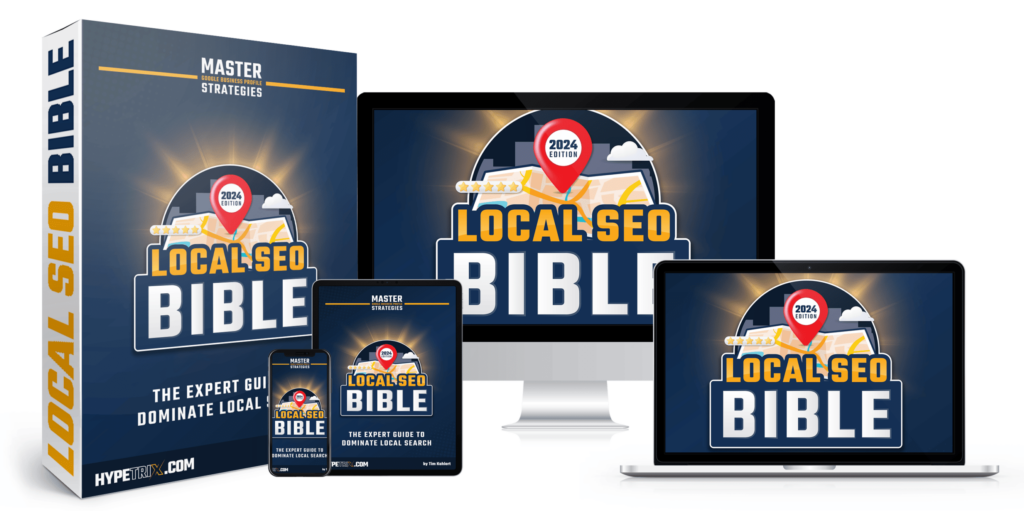How to make a local business website most appealing to visitors
What do you do when you have a craving for some particular type of pastry? Unless you’re made of money and can source pastries from France, chances are that you’re going to search for a local restaurant or bakery close by that makes what you’re craving.
For most of us, the closer the shop, the sooner we can get our hands on that donut or cupcake. Besides, local businesses give people personalized treatment that might not be seen in Fortune 500s and other big companies.
That pretty much sums up what local businesses mean to people around them.
As a local business owner, simply setting up shop down the road can only get you so far in your niche. You’ve got your work cut out for you if you want more than just the people in your immediate vicinity to know you as that great place down the street.
Building an online presence and digital marketing should be top of your list of priorities for your small business.
Why small businesses must have a local business website
Every business owner should have some knowledge of Google Business Profile. It’s a great way for businesses to manage their online Google presence, and it’s especially valuable for small and local businesses.
The numbers don’t lie. 46% of all Google searches are on information about a local business. The numbers go on to show that people have more trust in local websites when they are affiliated with Google Business Profile. 56% of consumers feel this way, according to a Brightlocal Report*.
So, there’s your answer to why your small business needs a website.
Want potential clients to find you? Help them do just that by providing the necessary information.
However, having a website is just the beginning. Granted, it’s a step in the right direction, but one must put in the right effort to get to the ultimate destination.
For a website to be useful to a business owner, it needs to hold people’s interest long enough to convert leads to paying customers.
Why having a website for your local business is important
- It's your ticket to a high ranking on Google. Without this, you won’t be nearly as visible to potential customers.
- You owe your customers that much. Are you in the skincare business? A blog post from you on “how to build a good skincare routine” will help your clients and save them the stress of having to find reliable posts on the topic.
- It helps you direct your clients easily to where they need to be, perhaps your shop – online or offline.
- Your customers have an easy means of reaching you. Several people may use this as basic criteria for doing business with you. They need to know they can easily reach out to you in case of an urgent question, and as proof of legitimacy. Get your customer service and FAQ pages updated for this purpose.
- If you want to grow beyond ‘that small corner shop down the road’, then you must put in the effort. A solid website helps build brand awareness and put your business out there.
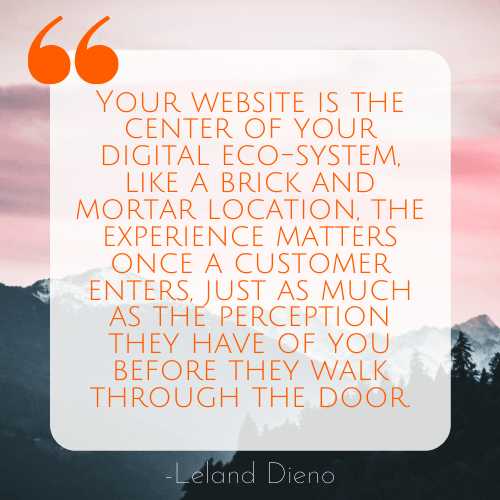
Start With A Local Business Website
So, you’ve decided to build your website. Great. Now, where do you start? Well, the obvious place would be to build your website, either yourself or with the help of a web designer or developer.
1. Building your Local Business website
A few things are key here. For starters, website design and user experience must be carefully considered. A professional web developer might be your best bet here. You wouldn’t want to have a website full of glitches, errors, or a poor user experience.
If you choose to do this yourself, tools like pre-made templates exist online that could provide you with the help you need to build a website.
2. Local Website optimization
This is beyond important in the grand scheme of things. There’s a reason it’s called ‘surfing the web’. People are likely to spend time on an interesting website that is appropriately structured.
Research shows that it takes just 2.6 seconds for someone’s eyes to land on key sections of a website. It’s a race, then; you’ve got just a couple of seconds to either make or break things regarding a new client. Use them well.
Resources and platforms such as Google Business Profile can only drive traffic to your website. It’s your role to make it organic and convert leads.
A. Local Content Optimization
Here’s a list of features that you could add to your pages in order to increase local relevance
- Place a get-directions link to Maps (for physical locations)
- Add local intent keywords like "nearby", "local" or "around"
- Include town/city, state code, neighborhoods, typical or famous roads/buildings/businesses, parking info
- Add External links to city websites (.gov-sites), related Wikipedia city pages, or closeby locations
- Use "service in city" anchor texts for internal links and city-related anchors for external links
- Use "service in city" anchor texts for internal links and city-related anchors for external links
- Add a Google plus-code
- Embed a Map or showcase your location/service area on an image map and link back to your GBP
- Add image titles and alt texts that you also use as primary headlines on the page (include relevant local keywords)
B. Match Local Website content To Google business Profile
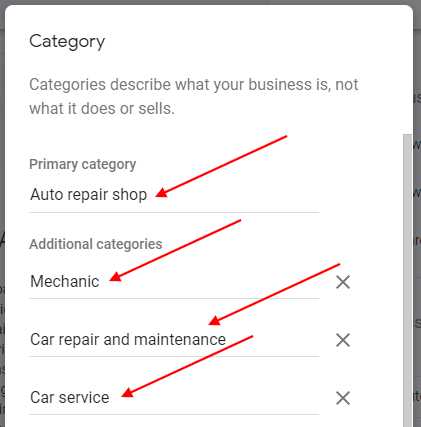
The Google Business Profile name should be reflected by the respective location page or homepage title. Make sure to use the same name across all platforms.
The same goes for GBP categories. You want to add exact match categories to your website’s headlines, body copy, and internal link anchors so that Google gets more indications of what your business does. Irrelevant categories may harm your local rankings.
C. Schema Markup
Add Schema Markup for local businesses to your website. Schema Markup helps search engines understand your content. While there are thousands of different Schema types, there is no need to tell Google that a web page is a web page. However, if the information on your site isn’t clear you can add Schema Markup to help Google understand the purpose of a particular page and provide better search results.
Pro-tip: Check your page for Schema Markup

D. CREATE A Local Business BLOG
Having a blog is too important to be mentioned casually. ‘Appealing’ content should not end on just your products or services. Have a blog section on your website. Regularly update it with posts that are relevant to your brand.
Businesses with blogs get 97% more clicks to their website than those without. This is a great way to keep people coming to your website. To make them spend even more time here, make your blog posts engaging and exciting. Make sure to post relevant videos as well. This makes users spend even more time on a website, plus they help build credibility. A report even showed that people spend 2.6x more time on websites with videos than those without.
Next, add backlinks and create a sitemap. A sitemap adds an extra level of professionalism and even lends a hand to the conversion aspect of your website. It could also help Google categorize your pages better.
Finally, a post summary and a table of contents make navigation so much easier for visitors, increasing their chances of spending more time on your website.

E. Make your Local website mobile-friendly
The importance of having a mobile-friendly website with a user friendly, intuitive interface cannot be overemphasized. 50.81% of global website traffic was generated by mobile devices in 2020. That’s over half of the total website traffic.
Several markets even skipped the desktop phase and went straight for mobile usage. Although you could probably get the best of both worlds if you optimized your website for both mobile and desktop use. However, if it comes down to a choice between the two, go for mobile.
Mobile-friendly also refers to a great page speed. Make sure you get at least a 50 score on Google Page Speed Insights and pay special attention to largest contentful paint, first input delay, and cumulative layout shift. (Core Web Vitals)
Pro-tip: Test your website with a mobile-friendly checker and check your site speed in respect to Core Web Vitals.
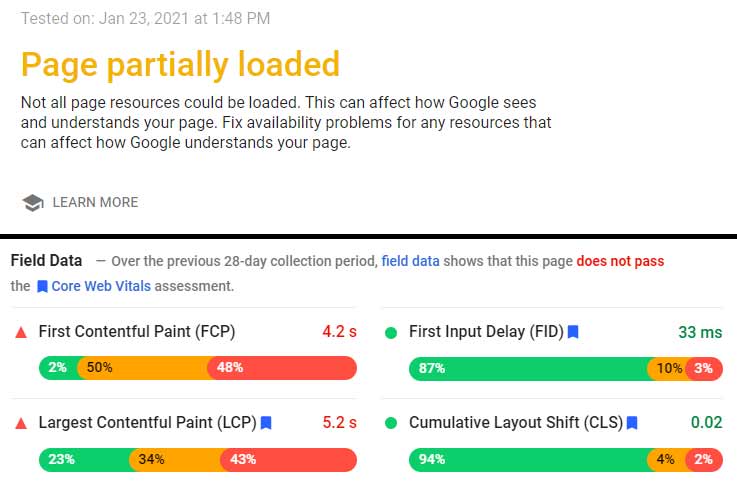
4. Get Reviews and testimonials From local Customers
Don’t be too shy to ask for help. Reviews and testimonials are beyond helpful in this scenario. They not only affirm the value of your product or service but also help prospective clients believe that your business is genuine.
In the hands of a smart business person, customer reviews and testimonials can be great tools for local marketing. Take Google Business Profile, for instance, reading reviews is one of the most commonly used features here. This goes to show how important it is to have positive feedback from your clients and showcase it on your website.
Yes, show them off! It’s almost instinctual for people to search out for these. Regardless of whether or not it’s the 79% of people who are influenced to go for a product by their friends and family* or the 70% that trust strangers’ reviews. Either way, reviews are important.
Note: This might seem like a great way to grow your business and make your website more appealing to prospective clients.
But whatever you do, DO NOT use fake reviews or fake testimonials on your website. It’s almost always bad for you when this happens because people can tell when they are being lied to. Genuine is always best.
5. Use trust signals
There’s no healthy relationship without trust. Be it a business relationship or otherwise. All transactions, especially online transactions, require trust between the business and the customer.
Adding credibility to your website automatically adds credibility to your business as well. This is a great place to show off. Awards, certificates, professional affiliations, and media mentions look great on your website. These also help to put people’s minds at ease.
Trust signals you could employ include
- Approved seller badges
- Case studies
- Staff photos
- Ratings (Google. Facebook, Yelp, Trust Pilot...)
- Company logos (customers or co-operations)
- Quotes from media publishers
- Employee certifications
- Endorsements by influencers, public figures, and local newspapers
- Reviews
- Testimonials (written, visual, videos)
Tailor trust signals to the right customer demographics
Trust signals such as Membership Trust Signals are particularly suited for local businesses. It often includes memberships to local professional organizations such as Local Chambers of Commerce and Workers Unions. This breeds a certain level of familiarity that puts prospective clients at ease.
It might seem like such small details but a survey of over 500 people in Australia, the United States, the United Kingdom, and Europe showed that trust signals increase their overall likelihood of purchase by 69%, 67%, 65%, and 64% respectively.
Pro-tip: Tailor trust signals to the right customer demographics. It’s best to keep them local and industry-related. This is because it’s far better for you when the trust signals you use, especially badges and certificates, can be identified by the local community and people who are knowledgeable about a specific product/service. This makes the people give more credence to them, and by default, you.

6. Provide Business information
The use of online directories should show you how important a correct NAP (name, address, and phone number) is for a business. This time around, it’s your website we’re talking about. Add all the necessary contact details you could have on your business. Also, details about the business’ services work just as well.
That said, the following information MUST be on your website –
- Contact information (name, address, phone)
- Directions to the store
- Opening and closing hours
- Email address
- Social media platforms (place them at the bottom)
These do a lot of good for any business – local or otherwise.
Remember to use your social media platforms and other websites to get out more information on your brand. Add a link to your website on each of these platforms so it’s easy to access your site, and eventually your business.

There’s a rather thin line between succeeding in your local business and struggling to stay afloat. It’s in the little things. Don’t have a website just for the sake of having one. Doing the above might just be your ticket to having a great website that can guarantee you success in your business.
See the entire article as a suggestion – nothing is set in stone and it´s a lot of guesswork because no one can be absolutely sure how Google’s (local) search algorithm works. Good luck!





